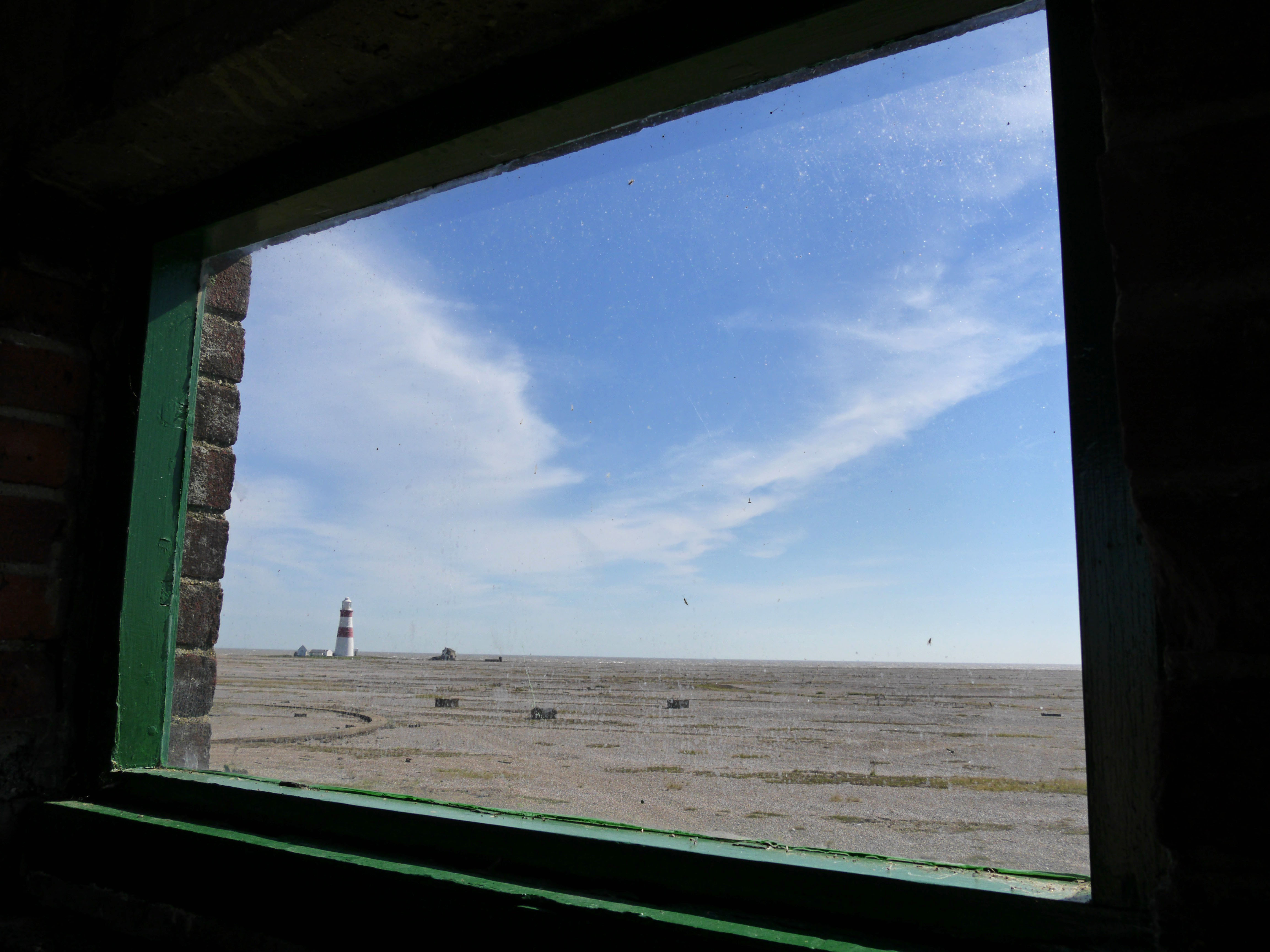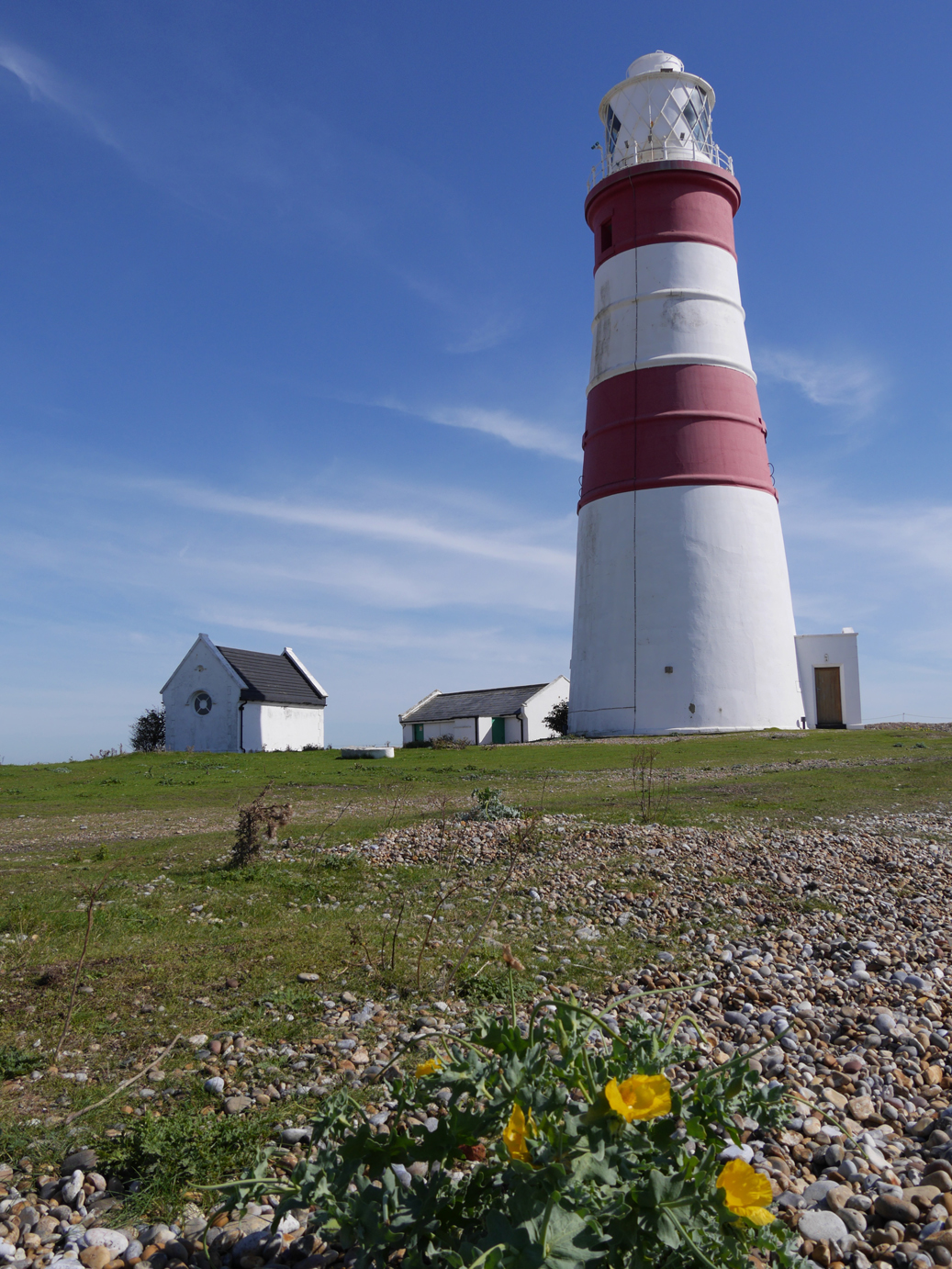The imminent loss of beacons

I have been to Orford Ness twice. The first time, my visit coincided with an exhibition that was taking place on the Orford Ness lighthouse. Part of the attraction of this exhibition is the ongoing threat that the lighthouse will eventually fall into the sea. The lighthouse was decommissioned by Trinity House in 2013, and subsequently purchased by the Orfordness Lighthouse Trust .
As a few mentioned to me during my visit, the exhibition was less about the death of the lighthouse than it was about celebrating its life. In reading some of the history on the lighthouse, there was a description of the beam being removed, and there is talk about the possibility of saving some of its parts before its demise. When I asked a visitor what she thought about this, she leaned in closer and whispered ‘I think it’s best to let the lighthouse go than save some of her parts as if she could exist without being whole’.
There is no question of the ties that bind locals with this lighthouse. The structure is a beautiful red and white beacon that can be seen from afar on the flat Suffolk coastline. The exhibition featured a quote that demonstrates how a structure can become so intimately enmeshed with childhood memories and one’s own identity.
“I used to lie in bed and listen to the fog horn. The light had always been there and when it suddenly wasn’t, it was like a little part of me had gone.”
That same day in September 2015, the sun was shining and I spent the rest of the afternoon walking on Orford Ness. Animals were grazing, rabbits were crossing the paths, flowers were blooming and when I got to the windy shoreline, the breeze was welcoming. I stood for a long time taking pictures of the shining lighthouse, its imposing figure overlooking the Ness.

During the winter, a number of storms battered the shores of Britain, and the Orfordness Lighthouse Trust sent a plea to raise £10,000 for urgent repairs – which was met. Volunteers helped install soft sea defences that were made of loaded builders’ sacks full of shingle and sand wrapped in geo-textile. As their website informs us: “This is not a permanent solution – this activity buys us time to make plans for a more permanent preservation of Orfordness Lighthouse”.
This reminded me of the time lapse video saving Abergeldie Castle from the January floods in Aberdeenshire. I’m pretty sure that if a time lapse video existed for the lighthouse, it would look similar.
There is a recurring language of threat when it comes to structures that have been part of the identity of an area. In a recent BBC report, the threat is measured in distance:
- in 2005, the distance from the lighthouse to the shoreline was 20m (65ft)
- in November 2015, the distance was halved to 10m (32ft)
And with threat comes the need to protect.
People find comfort in familiarity and there is a demand for these beacons, be they a lighthouse or a castle, to remain fixed and present in the landscape. But after experiencing the thrust of gale-like winds at Orford Ness in January, I wonder if it is possible to find ‘a more permanent preservation’ for the lighthouse. The sea defences buy some time, but for how long? If the recent exhibition was to celebrate the lighthouse’s life, then surely there is an acknowledgment that it cannot last forever. But is there ever an acceptance of loss? Are we ever prepared for the day when it goes, to allow what we cherish to go?
The second time I visited Orford Ness was in late January 2016. It was so rainy and windy that I could barely stand upright. Gone were the pristine visions of the lighthouse and the calm, comforting feelings I had in September. I was cold, wet and longed to be shielded from the seemingly insurmountable force of nature.
